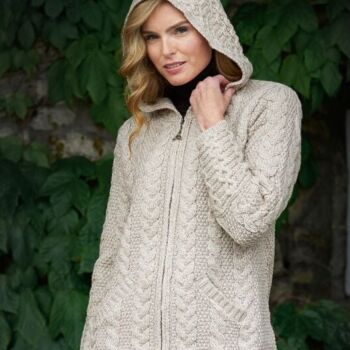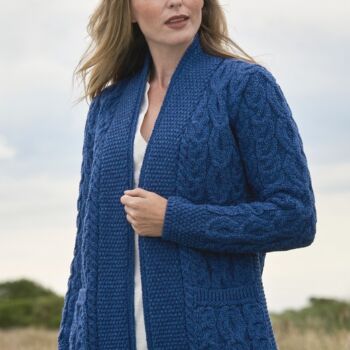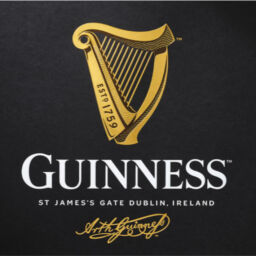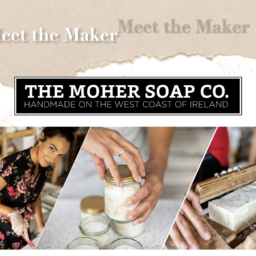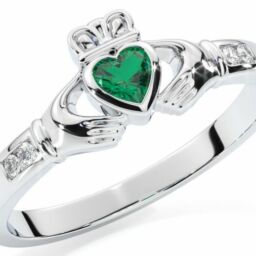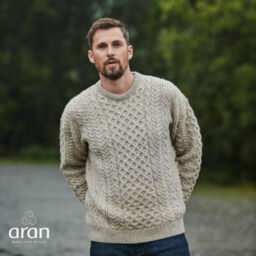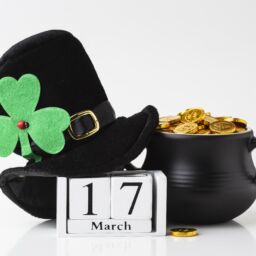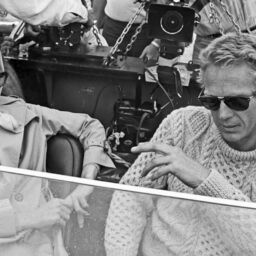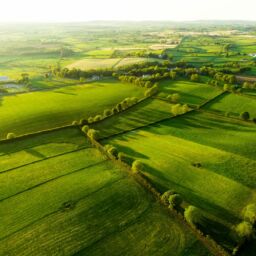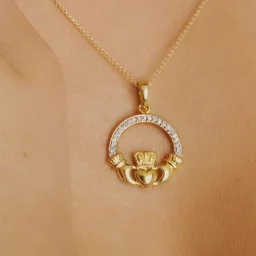Aran sweater origins: About the Aran sweater
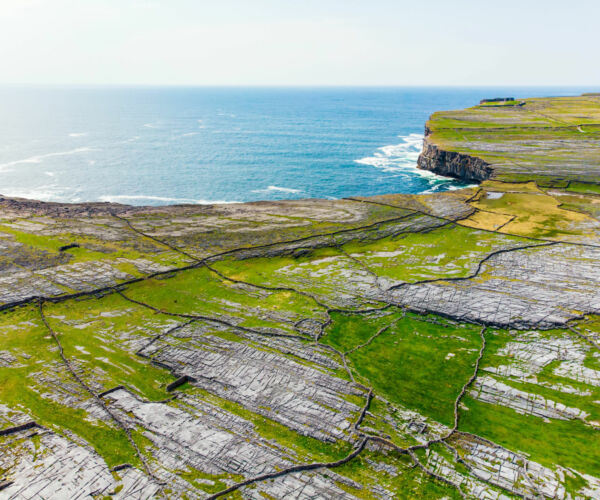
The history of Aran Sweaters begins at their namesake; the two Aran Islands in the Atlantic off the Galway bay, Aran Mór, and Aran Beag. By trade, most who lived there were fishermen and farmers living a simple life.
Aran sweaters were first made by hand by the women of the islands. As sheep were the only animals on the islands, naturally they were used for their wool. To tackle the harsh weather off the west coast, Aran knitwear was the perfect tool. Because of its stitching and material, it is a water repellant.
An amazing fact about this wool is it can absorb 30% of its weight in water before it feels wet. As a result of this, it was alternatively known as the Fishermans sweater, a term often used in coastal towns of Ireland and the US.
Aran women spun their own yarn on spinning wheels and each stitch and symbol is intricate and interwoven to create a masterpiece. Wool also has the ability to offer insulation, protecting from harsh weather conditions and cooling when warm.
Aran sweater stitches – Meanings & symbols
Patterns
Patterns were safeguarded by clans and passed down from generation to generation, as an identity for their family name. Presently, there are over 130 patterns of Aran wool sweaters on display in the Aran Sweater Market on the islands. A completed Aran sweater can have up to 100,000 stitches carefully crafted by the specific clan for their pattern style. Modern-day garment productions have moved far beyond the hand stitch craftsmanship of the Aran Knitters and as a result, these have become more rare.
Stitches
There are many stitches as we know, but we have picked out the three most commonly found in Aran knitwear at Carrolls.
Each knitwear piece may have combinations of stitches but most focus on the Diamond Stich, Cable Stitch and Zig Zag Stitch. As each sweater was hand-made, each one was as unique as the one before it. Some of the symbols used have a traditional interpretation – mainly a representation of good luck and wishes with some closely associated with religion. These sweaters continue to fascinate people worldwide.
Diamond stitch
This stitch represents the field of the Aran Islands and sometimes referred to in modern stitch as an argyle. This is a layering technique overlapping the motifs to get a 3D texture. This style and variations of the Diamond stitch can be found in many clans like Hennessy, Kennedy and McDermot.
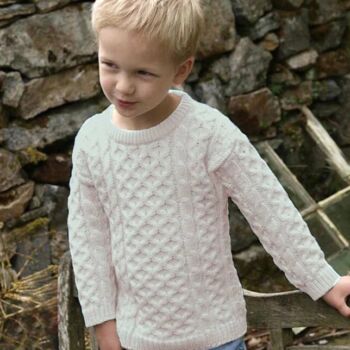
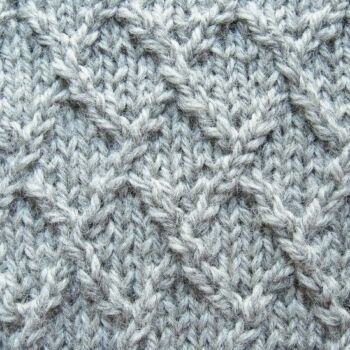

Cable stitch
This is a representation of the fisherman’s rope, often used to identity fisherman that sadly washed up onshore. This is created by a permutation of the stitches. For example, when you have four stitches on the needles, you can have the pattern 1234 and the next permutation might be 3412. The Cable stitch is the main stitch used in the clans of Ahern, Doyle and Maher.

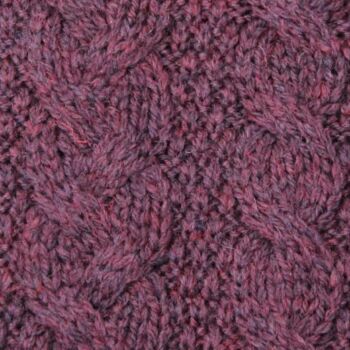
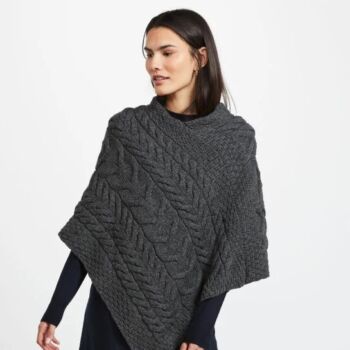
The zig zag stitch
This is a very common stitch used in Aran knitwear. This Zig Zag stitch represents the zig-zagging roads on the hilly islands. This also has the benefit of stopping the stitches from puckering or fretting. Aptly, this stitch can be found in the Carroll Clan stitch with a combination of other stitches and other clans like Nolan and O’Hara.



The Fair Isle stitch
The Fair Isle stitch is a design that incorporated a woven secondary coloured stitch design into Aran Sweaters. This gained popularity in the 20’s when worn by the Prince of Wales. Although not directly associated with any Irish clans, from a design aspect, this was adopted to help differentiate between fishermen.
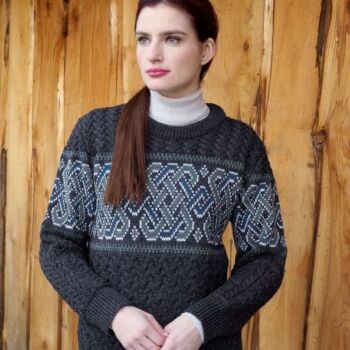
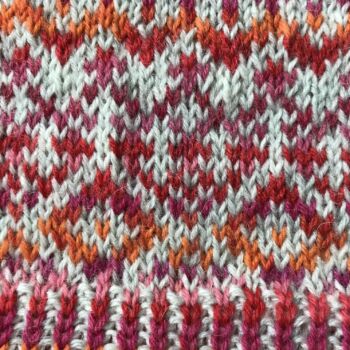
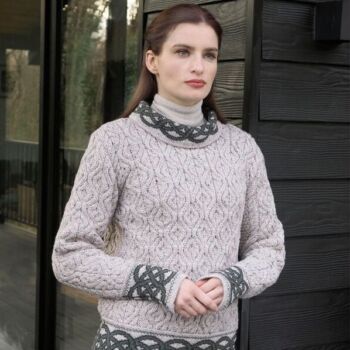
The basket stitch
The basket stitch represents the fisherman’s basket, a hope for a plentiful catch, using its unique layering technique to create the illusion of weaving. The basket stitch is more popular in blankets, men’s caps, and scarves. It’s often associated with the Collins and Mulligan clans.
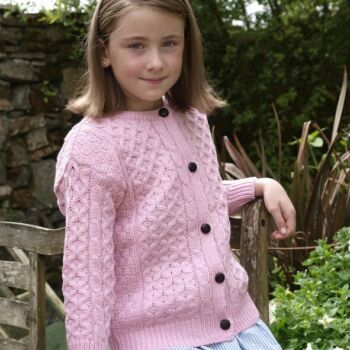
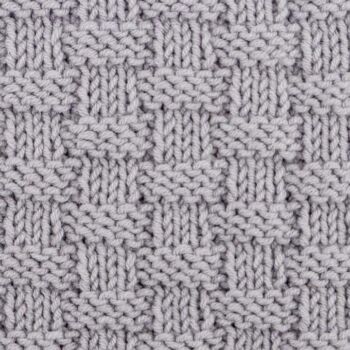

The Trinity stitch
This stitich is supposed to represent the Holy Trinity. It is done by making three stitches from one and one from three across the panel, hence its name. However, the Trinity stitch is a stitch of many names, sometimes referred to as the blackberry stitch, bramble stitch, or cluster stitch for its berry-like texture. It’s associated with the clans of Coughlan, Callaghan and Buckely.
From representing individual clans to protecting the fisherman and farmers, Aran sweaters are a true representation of Irish culture past and present. The purpose of these sweaters was to offer warmth, comfort and protection while offering identities to a clan through their stitch work. The same can be said for today through the Irish tradition of knitwear offering the same warmth, comfort and protection.
